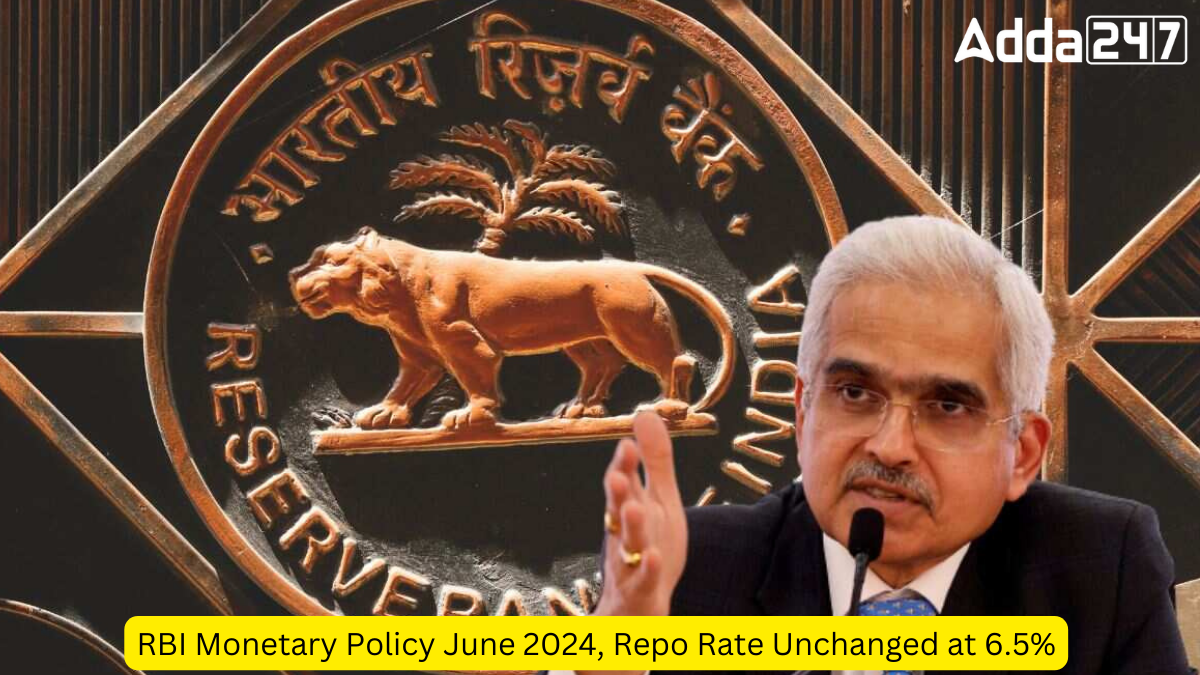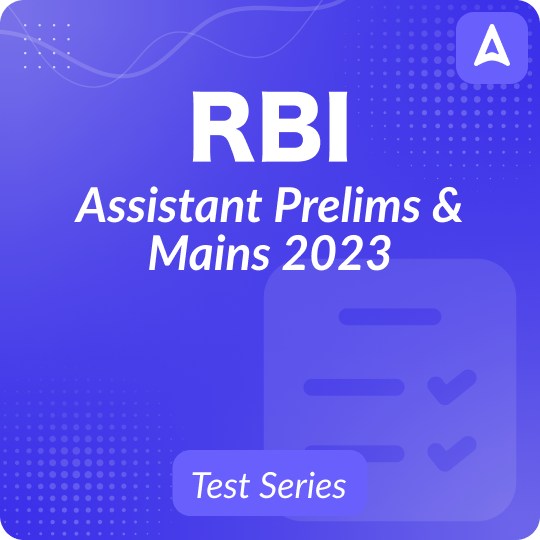RBI Governor Shaktikanta Das announced that the Monetary Policy Committee has chosen to maintain the policy repo rate at 6.5%, with a 4:2 majority decision. Consequently, the standing deposit facility (SDF) rate remains unchanged at 6.25%, while both the marginal standing facility (MSF) rate and the bank rate stand firm at 6.75%.
RBI Repo Rate are as under
- Policy Repo Rate: 6.50% (Unchanged)
- Standing Deposit Facility (SDF): 6.25% (Unchanged)
- Marginal Standing Facility Rate: 6.75% (Unchanged)
- Bank Rate: 6.75% (Unchanged)
- Fixed Reverse Repo Rate: 3.35% (Unchanged)
- CRR: 4.50% (Unchanged)
- SLR: 18.00% (Unchanged)
Key Decisions From June MPC:
- CPI inflation in Q1 was seen at 4.9%, Q2 at 3.8%, Q3 at 4.6%, and Q4 at 4.5%, said Shaktikanta Das.
- Net FPI inflows stood at $41.6 billion, compared with outflows in FY22 and FY23, said the RBI Governor.
- RBI will permit use of third-party UPI apps for making UPI payments from PPI wallets.
- RBI will introduce mobile app to operate in retail direct portal for retail investors.
- Total flow of resources to the commercial sector was at ₹31.2-lakh crore in FY24.
Real GDP growth for FY25 is projected at 7.2 per cent.
- Q1 at 7.3 percent,
- Q2 at 7.2 per cent and
- Q3 and Q4 each at 7.3 percent
The meeting of RBI’s six-member panel are expected as follows:
- August 6-8, 2024
- October 7-9, 2024
- December 4-6, 2024
- February 5-7, 2025.
Who are members of the RBI MPC?
The RBI MPC is comprised of six members, including both external members and RBI officials. This includes the RBI Governor, 2 deputy governors, and 3 external members
- Shaktikanta Das, Governor of RBI
- Michael Debabrata Patra, Deputy Governor of RBI
- Rajiv Ranjan, Officer of RBI nominated by the Central Board, Member
- Prof. Ashima Goyal, Professor, Indira Gandhi Institute of Development Research, Member
- Prof. Jayanth R. Varma, Professor, Indian Institute of Management Ahmedabad, Member
- Dr. Shashanka Bhide, Senior Advisor, National Council of Applied Economic Research, Member.
RBI Repo Rate: Instruments of Monetary Policy
- Repo Rate: The interest rate at which the Reserve Bank provides liquidity under the liquidity adjustment facility (LAF) to all LAF participants against the collateral of government and other approved securities.
- Standing Deposit Facility (SDF) Rate: The rate at which the Reserve Bank accepts uncollateralised deposits, on an overnight basis, from all LAF participants. The SDF is also a financial stability tool in addition to its role in liquidity management. The SDF rate is placed at 25 basis points below the policy repo rate. With introduction of SDF in April 2022, the SDF rate replaced the fixed reverse repo rate as the floor of the LAF corridor.
- Marginal Standing Facility (MSF) Rate: The penal rate at which banks can borrow, on an overnight basis, from the Reserve Bank by dipping into their Statutory Liquidity Ratio (SLR) portfolio up to a predefined limit (2 per cent). This provides a safety valve against unanticipated liquidity shocks to the banking system. The MSF rate is placed at 25 basis points above the policy repo rate.
- Liquidity Adjustment Facility (LAF): The LAF refers to the Reserve Bank’s operations through which it injects/absorbs liquidity into/from the banking system. It consists of overnight as well as term repo/reverse repos (fixed as well as variable rates), SDF and MSF. Apart from LAF, instruments of liquidity management include outright open market operations (OMOs), forex swaps and market stabilisation scheme (MSS).
- LAF Corridor: The LAF corridor has the marginal standing facility (MSF) rate as its upper bound (ceiling) and the standing deposit facility (SDF) rate as the lower bound (floor), with the policy repo rate in the middle of the corridor.
- Main Liquidity Management Tool: A 14-day term repo/reverse repo auction operation at a variable rate conducted to coincide with the cash reserve ratio (CRR) maintenance cycle is the main liquidity management tool for managing frictional liquidity requirements.
- Fine Tuning Operations: The main liquidity operation is supported by fine-tuning operations, overnight and/or longer tenor, to tide over any unanticipated liquidity changes during the reserve maintenance period. In addition, the Reserve Bank conducts, if needed, longer-term variable rate repo/reverse repo auctions of more than 14 days.
- Reverse Repo Rate: The interest rate at which the Reserve Bank absorbs liquidity from banks against the collateral of eligible government securities under the LAF. Following the introduction of SDF, the fixed rate reverse repo operations will be at the discretion of the RBI for purposes specified from time to time.
- Bank Rate: The rate at which the Reserve Bank is ready to buy or rediscount bills of exchange or other commercial papers. The Bank Rate acts as the penal rate charged on banks for shortfalls in meeting their reserve requirements (cash reserve ratio and statutory liquidity ratio). The Bank Rate is published under Section 49 of the RBI Act, 1934. This rate has been aligned with the MSF rate and, changes automatically as and when the MSF rate changes alongside policy repo rate changes.
- Cash Reserve Ratio (CRR): The average daily balance that a bank is required to maintain with the Reserve Bank as a per cent of its net demand and time liabilities (NDTL) as on the last Friday of the second preceding fortnight that the Reserve Bank may notify from time to time in the Official Gazette.
- Statutory Liquidity Ratio (SLR): Every bank shall maintain in India assets, the value of which shall not be less than such percentage of the total of its demand and time liabilities in India as on the last Friday of the second preceding fortnight, as the Reserve Bank may, by notification in the Official Gazette, specify from time to time and such assets shall be maintained as may be specified in such notification (typically in unencumbered government securities, cash and gold).
- Open Market Operations (OMOs): These include outright purchase/sale of government securities by the Reserve Bank for injection/absorption of durable liquidity in the banking system.










 India’s Soyoil Imports to Hit Record Hig...
India’s Soyoil Imports to Hit Record Hig...
 India Signs Trade Cooperation Pact with ...
India Signs Trade Cooperation Pact with ...
 Karnataka GST Evasion Cases Jump Fivefol...
Karnataka GST Evasion Cases Jump Fivefol...

